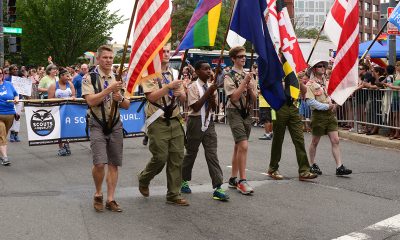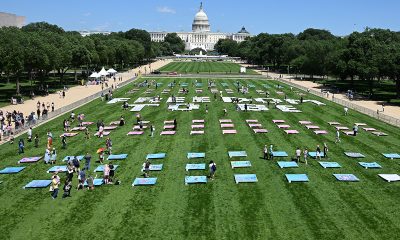Living
Country roads, take me home
New W.Va. gay club hopes to succeed where others nearby have failed
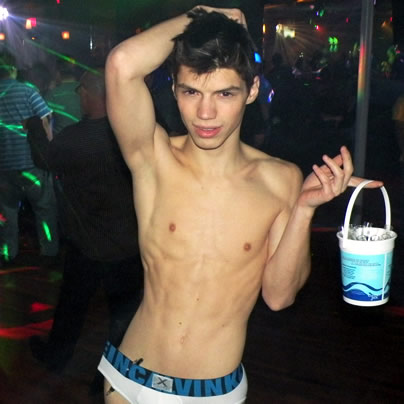
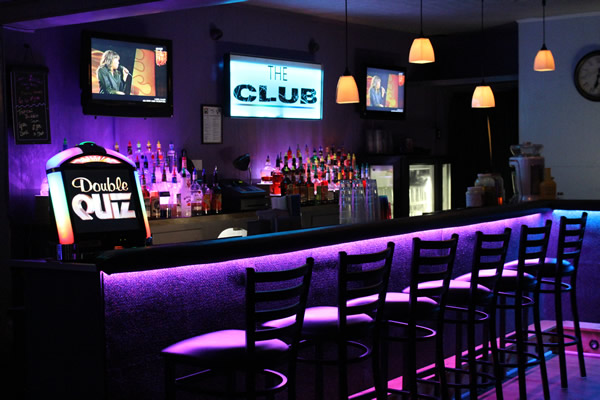
A recent night at The Club, a new gay bar in Martinsburg, W.Va. (Photo by Dale Gish)
MARTINSBURG, W.Va. — Gay-popular entertainment districts are almost always found in major metropolitan areas, but there’s a smattering of clubs and restaurants in the close-by regions of Maryland’s Cumberland Valley and West Virginia’s Eastern Panhandle that are drawing decent-sized crowds despite being more than an hour from either Washington or Baltimore.
For decades, The Lodge in Boonsboro, Md., has been pretty much the only gay nightclub in the region. Formerly known as Deer Park Lodge and at times closed altogether, it’s been thriving again under new management since 2011 when partners Ryan Dryden and Joe Velazquez moved from Washington to reopen and run it.
Since January, it’s faced some competition as The Club (theclubwv.com), a new gay bar/club in Martinsburg, W.Va.’s Spring Mills area (about 21 miles from The Lodge), took over a large spot formerly known as straight bars Ambitions and before that, Gatsby’s. Owner Coby Myers, a gay sheriff in West Virginia, has his gay friends Jarvis Jerry Brooks and Dale Gish running the operation. They say, so far, business has been good and that they’re carving out a niche for themselves in the region by offering strong customer service, a “family”-type atmosphere and a clean and newly remodeled space. It’s about 80 miles from Dupont Circle.
“A lot of people feel it’s just easier to get instant gratification now on the Internet,” says Brooks, who DJs at The Club in addition to booking talent and planning events. “I think my thing is just that a lot of clubs have forgotten the whole aspect of a family feel, where everybody knows your name and there’s a home bar feel to it. You’re not just a number, you’re not just a door cover, there’s more to it than that.”
But can it last? Are there enough LGBT residents in these parts of Maryland and West Virginia to support two small-town gay clubs? A few others have come and gone in recent years. The Mariner Club, locals say, had a decent run for a few years on Martinsburg’s Winchester Ave. It was across the street from Sugar Daddy’s, a male strip club that, although not technically gay, had gay strippers and more gay male patrons than straight women. But both are now closed.
And more recently Spin/Club Underground, which was in downtown Hagerstown just a few doors down from the historic Maryland Theatre, died a relatively quick death after being open less than a year. Brooks, who DJed at the gay club (his DJ name is Jerrbear), says business was “hit and miss.”
Those involved say they see a brighter future for The Club.
“For one thing, it’s not mismanaged,” says Ray Stagner, a drag queen who performs as Cheyenne and who debuted at The Club last Saturday night.
Wearing full drag makeup but dressed in a ball cap, jeans and guy’s T-shirt while puffing on a cigarette in The Club’s downstairs smoking-allowed pool room, Stagner, a Hagerstown resident, says gays and drag performers in the region will support both The Club and The Lodge. Because of liquor laws, The Club can stay open an hour later (until 3 a.m.) on Saturday nights whereas the Lodge closes at 2.
“I think it’s great,” Stagner says. “If people want to go here one night they can, or they may do like we used to do in the old days. As soon as they called last call at Deer Park, we used to bail from Hagerstown and come down here to Gatsby’s once they closed the bars in Hagerstown.”
Last Saturday night at about 10 p.m., The Club had a healthy crowd though it wasn’t packed. The space is mammoth — there’s a large dance area, stage, bar, tables, seating area, downstairs pool room, kitchen and a huge outdoor patio and bar Brooks says they “can’t wait” to use once the weather gets warmer.
“It reminds me of the old Tracks in D.C.,” he says. “There’s so much potential for this space.”
All the interiors have been redecorated since it was Ambitions. The hardwood dance floor, Brooks says, is the one original component — it dates to the 1950s.
A diverse crowd mills about including 20- and 30-ish gay guys, a few older gay men, a few lesbians and a drag queen or two. A few dance, but not many. It’s still early. Several make trips up and down the half-flight of stairs to take smoke breaks. The pool room is less opulent, but the smokers don’t seem to mind. Large industrial smoke eaters keep the room clean and from upstairs it’s impossible to tell there’s smoke in the building.
Gish says the region is large enough that gays are coming from Winchester, Va.; Cumberland, Md.; even Greencastle and Chambersburg, Pa., and that The Club will thrive. Gays from Baltimore or D.C. who want a change of scenery even visit on occasion, he says.
“We’re seeing our weekend door counts increase every weekend,” Gish says. “I think it will only improve as the weather warms.”
There are about 12 on staff but DJs and drag performers are independent contractors. Brooks says they’re seeing about 200 come through the doors on an average Saturday night. A few times it’s gotten close to 300. It’s open Wednesday through Saturday and on weekends there’s a $5 cover. Eighteen-to-20-year-olds can get in anytime but have to pass Breathalyzer tests when they come and go. Gish guesses about 20 percent of the clientele might be “some variation of straight” and says the crowd, because of the smaller overall numbers, is more integrated than in city bars. He says straights, lesbians, bears and twinks all party together here.
Despite rumors of bad blood between The Club and The Lodge, the owners of the latter say they bear no ill will.
“It’s really not a question of competition, it doesn’t matter how many there are in the area, there are more than enough [LGBT people] to go around,” Velazquez says. “So far business has stayed good for us and been pretty good for them. Whether it stays that way, time will tell.”
He says there are even some unexpected benefits at times.
Of The Lodge’s drag cast, Velazquez says he encourages them to perform at other bars.
“They get fans who will then follow them from show to show and we have some people who only show up for the drag shows, so it’s good for them to be out at different bars in the area,” he says. “I have no problem with it. It’s a free world. If I wanted to have them sign an exclusivity contract, I would, but we don’t.”
There are also a few gay-owned restaurants in the region — the Gourmet Goat and Georgia Boys Café in Hagerstown, and Café Izmir in nearby Funkstown, Md.
The Goat, (41 North Potomac Street), has been in its present location for seven years and is known for its vast array of martinis. Owners Steve Cook and Paul Deputy live on site and run it “very much hands on,” Deputy says.
Café Izmir is owned by Nihal Mizah, who’s straight. The cafe became an LGBT destination of sorts during the time The Lodge was closed. Lesbian Karla Auch helps her manage it.
Gish says he thinks it’s more than a coincidence. Although these areas, he says, will never have the large gay communities Baltimore and Washington have, there are LGBT people here and he says they’re more comfortable being out and open than they were even a decade ago.
“I think there’s a social change happening,” he says. “And not just in the media, but in families too and the culture in general. It’s becoming more accepted to be gay and be open about it, or lesbian, or bi or trans or whatever you are. Society is becoming more accepting and these business owners want to pursue their dreams without feeling that they’re going to be persecuted. I know all these business owners and I support them all and wish them the best.”
Real Estate
Tips for LGBTQ buyers, sellers during holidays
A powerful and overlooked window for real estate transactions

The holiday season is a magical time, filled with celebration, travel, connection, and reflection. It also happens to be a powerful — and often overlooked — window for both buying and selling real estate. For members of the LGBTQ+ community, shopping for a new home or preparing to list a property during the holidays comes with opportunities, challenges, and important considerations that deserve thoughtful attention.
Whether you’re preparing to make a move as a same-sex couple, searching for safe and affirming neighborhoods, or hoping to secure the best possible price for your home sale before the new year, the holidays can offer unique advantages. With an inclusive approach, LGBTQ+ friendly resources, and the right professional guidance, this season can be a strategic and rewarding time to take your next real estate step.
Below are actionable tips, insights, and resources specifically tailored to LGBTQ+ home buyers and sellers navigating the holiday season.
Why the Holidays Can Be the Right Time
Lower Competition & Motivated Sellers
Because so many people put their real estate plans on pause during November and December, LGBTQ+ home buyers may see lower competition, fewer bidding wars, and sellers who are eager to close before January. This can bring real advantages for first-time gay home buyers or same-sex couples seeking more favorable negotiating terms.
Buyers Are More Serious
If you’re selling your home as an LGBTQ+ individual, remember: holiday buyers tend to be more intentional, financially prepared, and timeline-driven. This can make the sale process smoother.
Holiday Appeal Helps Homes Show Better
Warm lighting, seasonal décor, and neighborhood festivities can enhance curb appeal and emotional impact — which can be especially valuable when selling your home.
Tip #1: Choose LGBTQ-Friendly Representation
Above all else: work with a professional who understands the LGBTQ+ community and the unique concerns LGBTQ+ clients have.
This means choosing:
- a gay realtor
- a lesbian realtor
- an LGBTQ+ friendly real estate agent
Agents who are part of, or deeply familiar with, the LGBTQ+ community can make a tremendous difference in safety, comfort, and confidence throughout the transaction.
For more than 30 years, GayRealEstate.com has been the trusted leader in LGBTQ+ real estate, providing LGBTQ+ home buyers and sellers access to:
- verified LGBTQ+ real estate agents
- same-sex couple home buying experts
- LGBTQ+ friendly realtors near you
- agents experienced in discrimination-related protections
- LGBTQ+ relocation specialists
Whether you’re buying or selling, this starts you on the right path.
Tip #2: Focus on LGBTQ-Friendly Neighborhoods
If you’re buying a home during the holidays, make researching neighborhoods a top priority.
Look for areas known for:
- Inclusion & diversity
- Active local LGBTQ+ groups
- Gay-friendly businesses
- Visible LGBTQ+ community presence
- Supportive schools & services
- Pride events & alliances
Searching online helps — but talking with an LGBTQ+ friendly realtor who knows these neighborhoods firsthand is invaluable.
Also search:
- LGBTQ+ crime statistics
- local anti-discrimination policies
- protections against housing discrimination
- hate crime data
- political climate
- HOA regulations
Your home should feel safe year-round, not just festive in December.
Tip #3: Know Your Legal Protections
Housing discrimination still exists — and LGBTQ+ home buyers and sellers must remain vigilant.
While federal protections exist through the Fair Housing Act (as interpreted to include sexual orientation and gender identity), not all states provide equal protection.
Know your rights around:
- Mortgage discrimination
- Rental screening discrimination
- Sellers refusing offers from LGBTQ+ buyers
- HOA discrimination
- Harassment after move-in
Your agent should be able to assist — but GayRealEstate.com also offers educational guidance and resources for navigating LGBTQ+ legal protections in real estate
Tip #4: Navigate the Emotional Side
For LGBTQ+ buyers and sellers, the holidays can stir up complex feelings:
- family dynamics
- financial pressure
- expectations around marriage or partnership
- relocation stress
- memories tied to a home
Be patient with yourself.
Buying or selling a home is life-changing — honor the emotional journey as much as the financial one.
Tip #5: Take Advantage of Holiday Cost Savings
Buying?
- Lower interest rates may appear around December
- Contractors often discount home inspections & repairs this time of year
- Movers run holiday promotions
Selling?
- Minor seasonal upgrades help tremendously:
- warm lighting
- new evergreen planters
- festive front door accents
- Be careful not to over-decorate — buyers need to see the space clearly
And yes — holiday cookies help.
Tip #6: If You’re Relocating — Plan Ahead
Many LGBTQ+ buyers relocate during the holidays to:
- be closer to family
- move in with a partner
- begin a new job in the new year
If you’re relocating as an LGBTQ+ couple or family:
- research local LGBTQ+ resources
- connect with local LGBTQ+ organizations
- ask your gay real estate agent about local LGBTQ+ clubs, groups, and services
- evaluate long-term safety for LGBTQ+ families
Plan early — December moves get booked fast.
Tip #7: Use Trusted LGBTQ Real Estate Resources
The most important resource of all:
GayRealEstate.com — the #1 dedicated LGBTQ+ real estate resource for over 30 years.
On GayRealEstate.com, you can find:
- LGBTQ+ friendly real estate agents nationwide
- Verified gay and lesbian Realtors
- LGBTQ+ real estate market information
- Same-sex couple home buying guidance
- LGBTQ+ real estate services
- Gay and lesbian friendly neighborhoods
- Relocation tools
- LGBTQ+ home buyer & seller education
No other site offers this level of specialization, expertise, or community connection.
The holidays are more than just a season of celebration — they’re also a meaningful opportunity for LGBTQ+ home ownership, real estate transitions, and new beginnings. Whether you’re a first-time gay home buyer, a same-sex couple selling a home, or an LGBTQ+ family preparing to relocate, you deserve an experience grounded in respect, inclusion, and safety.
With the right preparation — and the right LGBTQ+ friendly real estate agent — your journey can be rewarding, affirming, and filled with new possibilities for the year ahead.
To find an LGBTQ+ real estate agent who understands your needs, visit GayRealEstate.com, the trusted leader in LGBTQ+ real estate services, resources, and representation for over three decades.
Scott Helms is president and owner of Gayrealestate.com.
Autos
Revving up the holidays with auto-themed gifts
Lamps, mugs, headphones, and more for everyone on your list
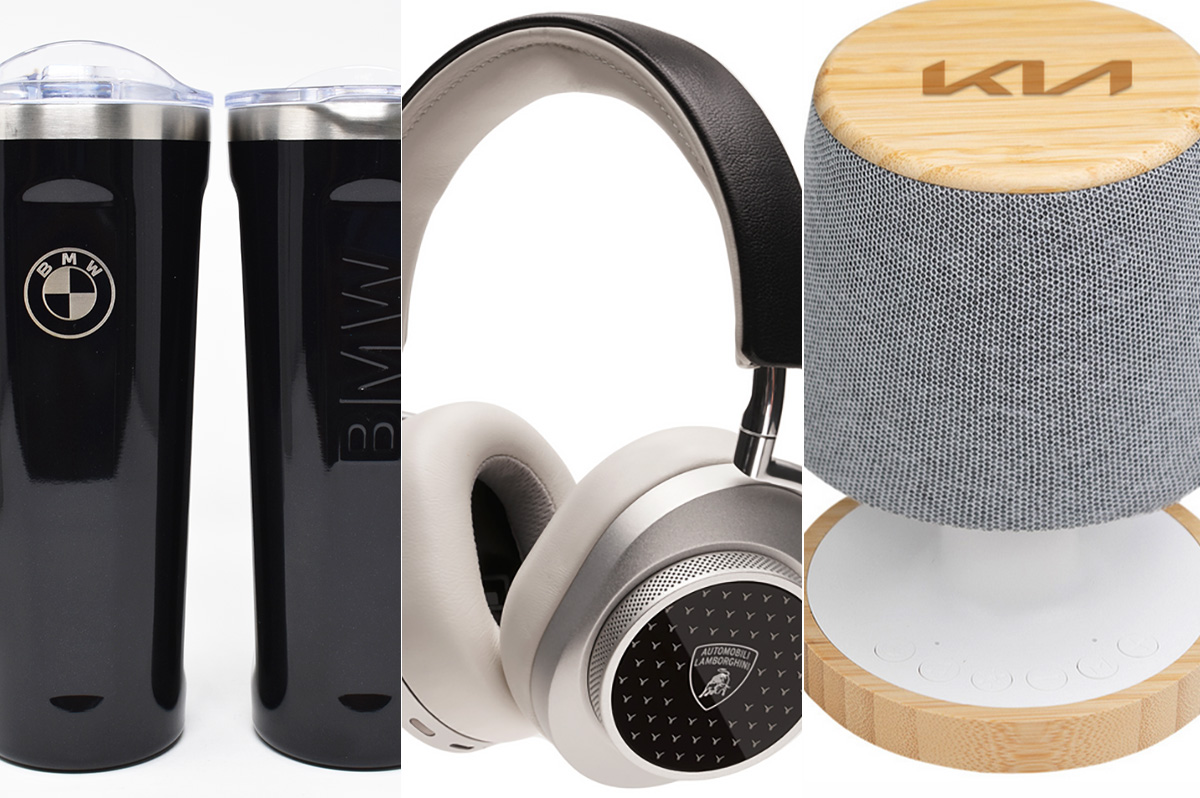
Here’s how to shift your holidays into high gear.
Bentley Bottle Stopper
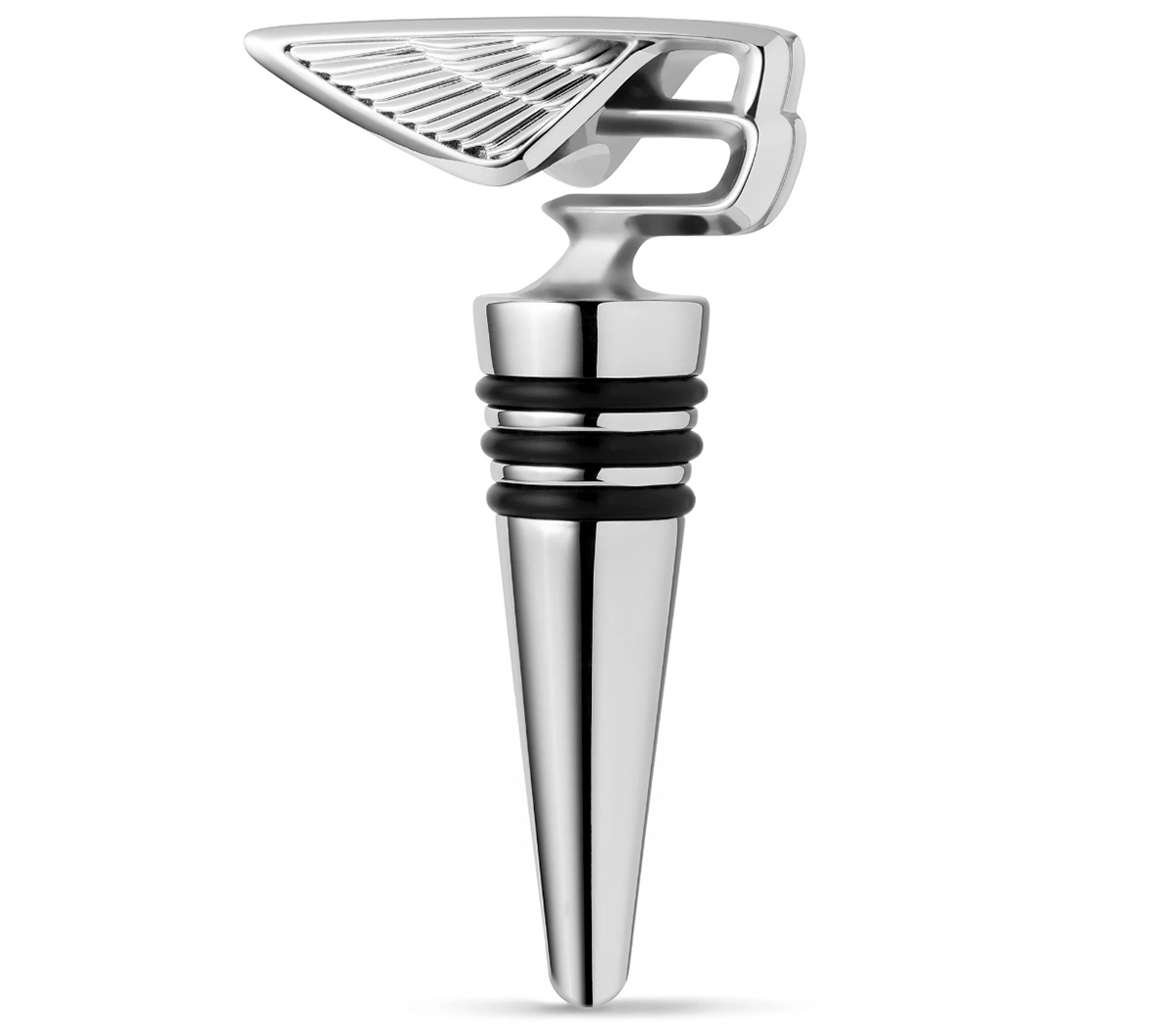
Pop your cork—in a good way—with a Bentley bottle stopper ($106), made of zinc alloy with chrome plating and rubber rings. The classy design is inspired by the automaker’s iconic “Flying B” mascot from 1930.
Subaru Motorsports Counter Stool
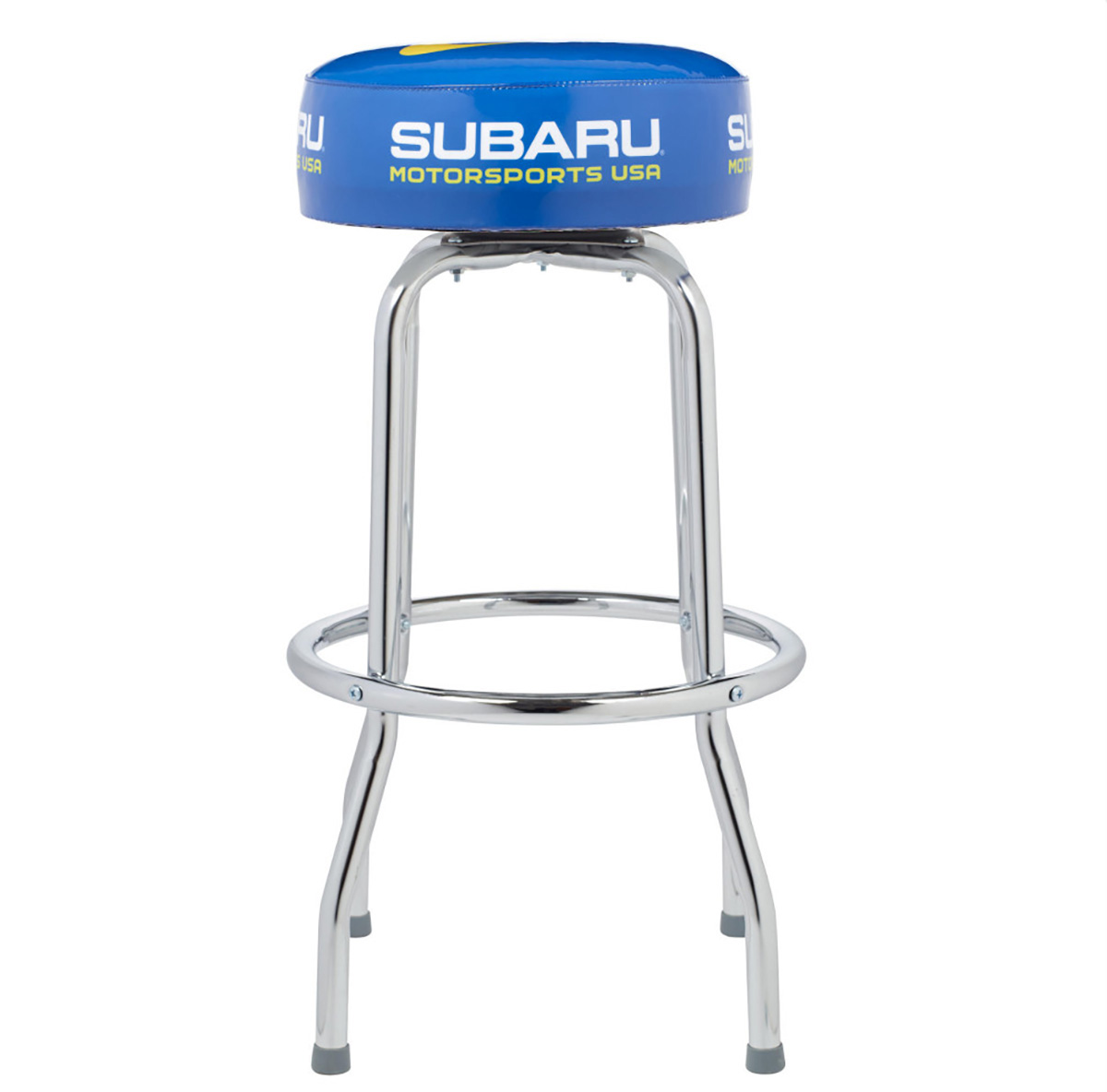
Belly up to the bar with the Subaru Motorsports Counter Stool ($175). The 30-inch-tall metal chair—with padded vinyl cover and automaker logo—is lightweight and swivels 360 degrees.
BMW Luxe Luggage
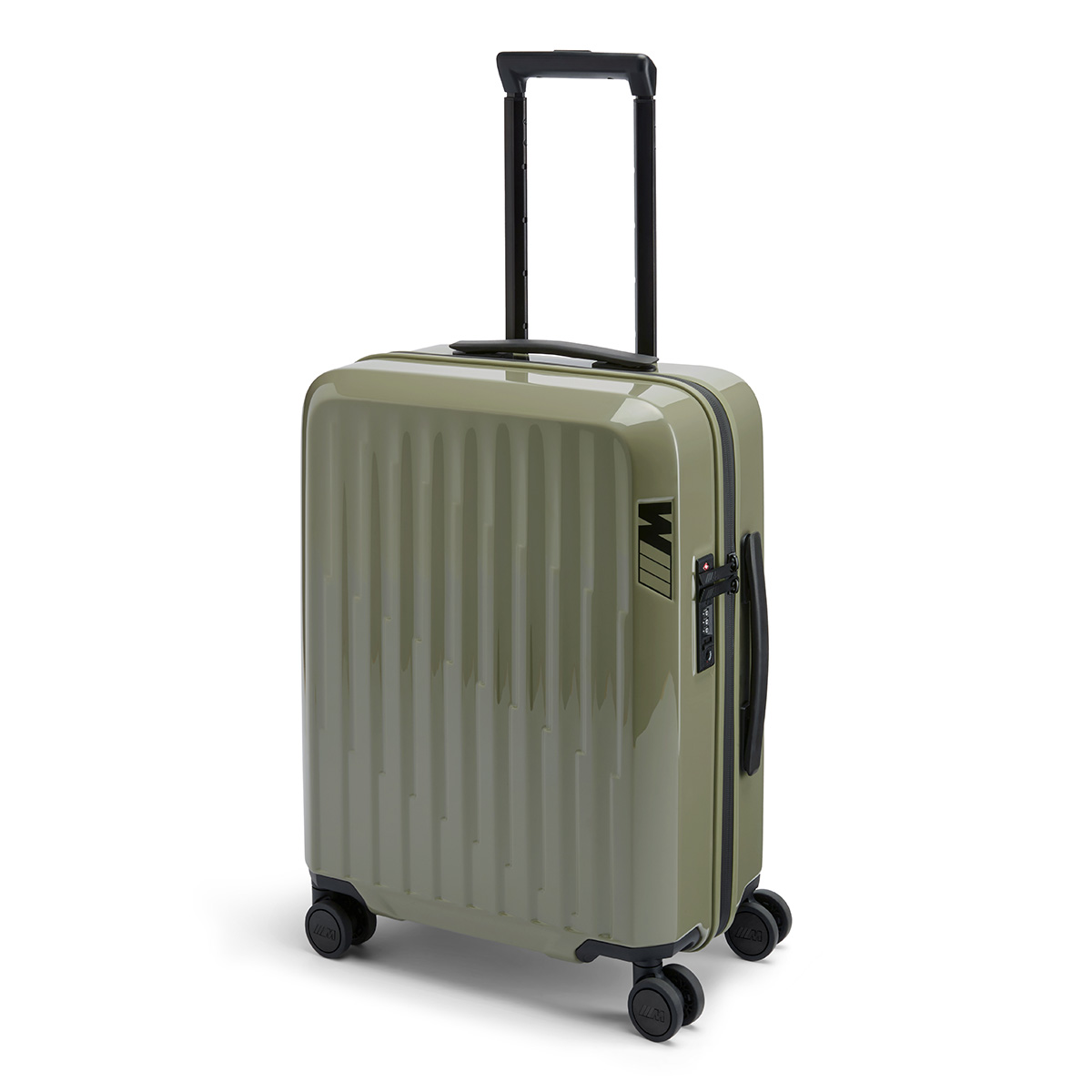
You won’t have trouble spotting this chic khaki-green BMW M Boardcase ($307) at airport baggage carousels. The high-performance “M” logo is etched on the durable polycarbonate casing, as well as on the main compartment zipper and all four of the sturdy double wheels. Comes with recycled lining, along with laundry and shoe bags.
Ford Yoga Gym Bag
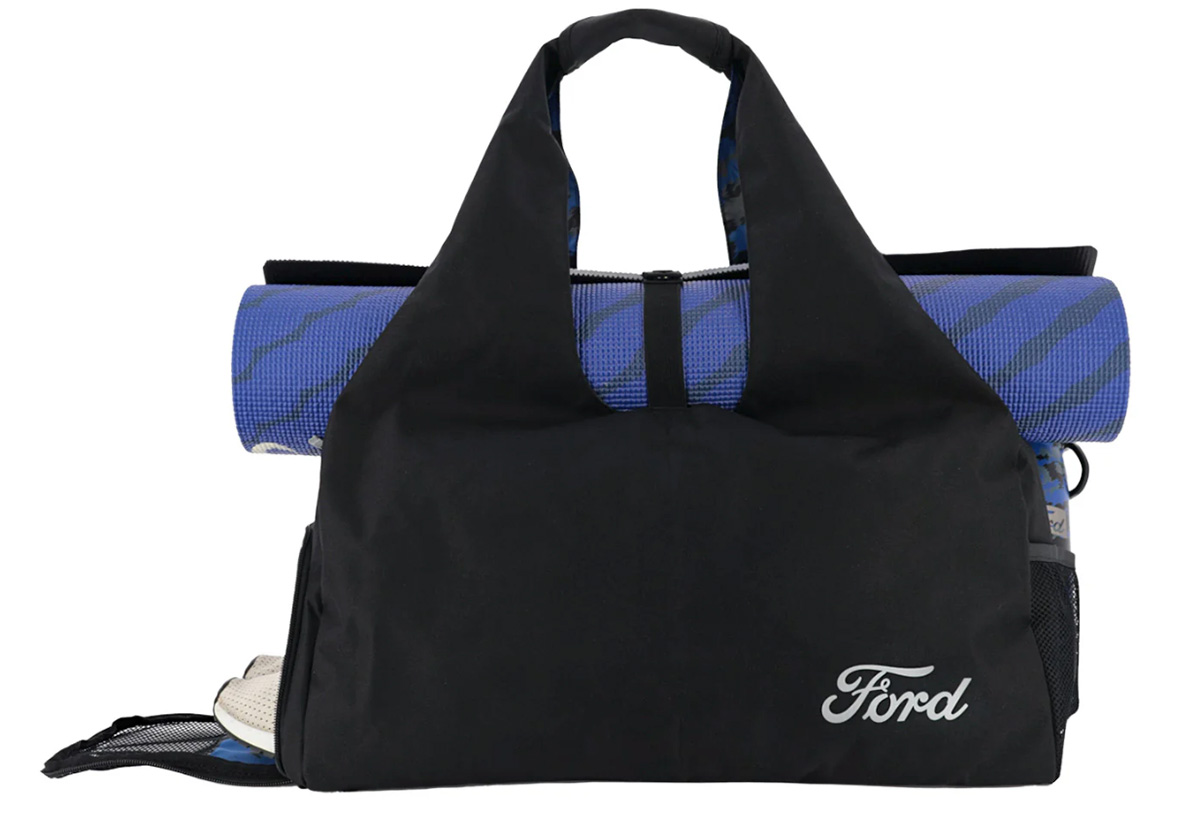
The Ford Yoga Gym Bag ($15) has a wide handle and button strap to securely carry a yoga mat, as well as convenient pockets to stow water bottles and shoes. Made of black polyester, with reflective silver Ford logo. (Yoga mat not included.)
Kia Mini Lamp with Speaker/Sound
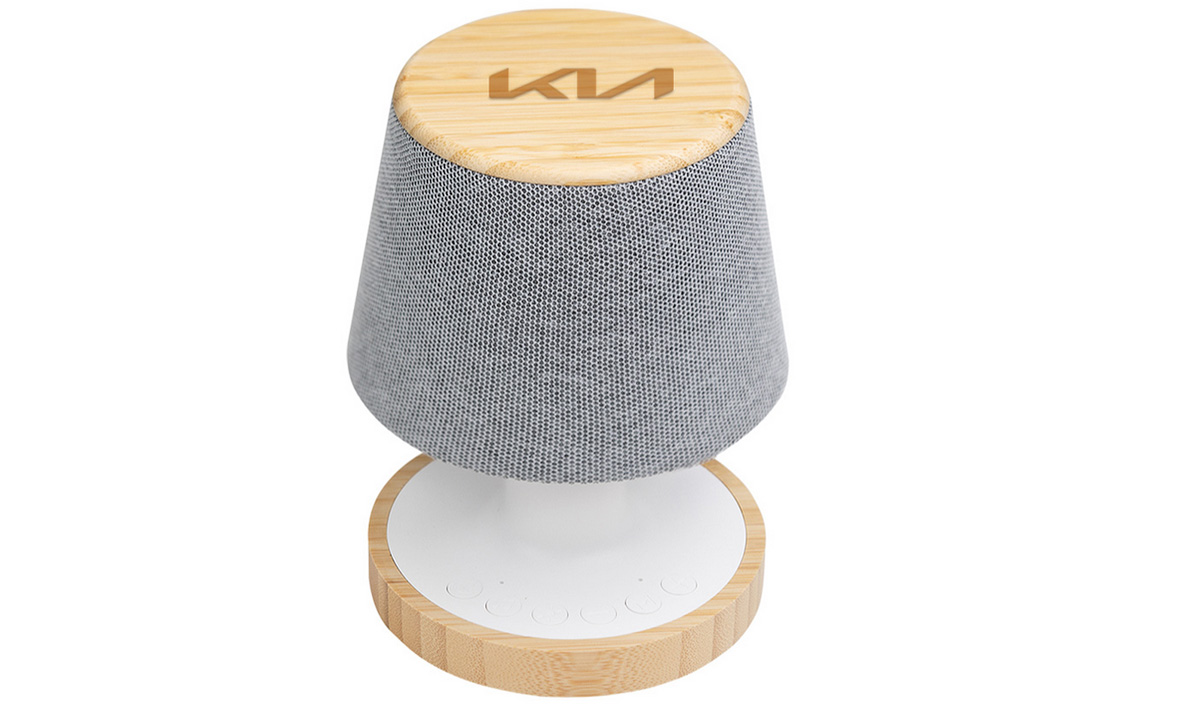
It doesn’t get much more Zen than a Kia Mini Lamp with Speaker and Sound Machine ($50). Made of bamboo, sturdy plastic and a fabric grill, the tiny wireless lamp has LED lighting with three settings. Pair with your phone to choose from eight soothing sounds: brook noise, bird chirp, forest bird, white bird, ocean wave, rainy day, wind and fireside.
Lexus Green Pro Set
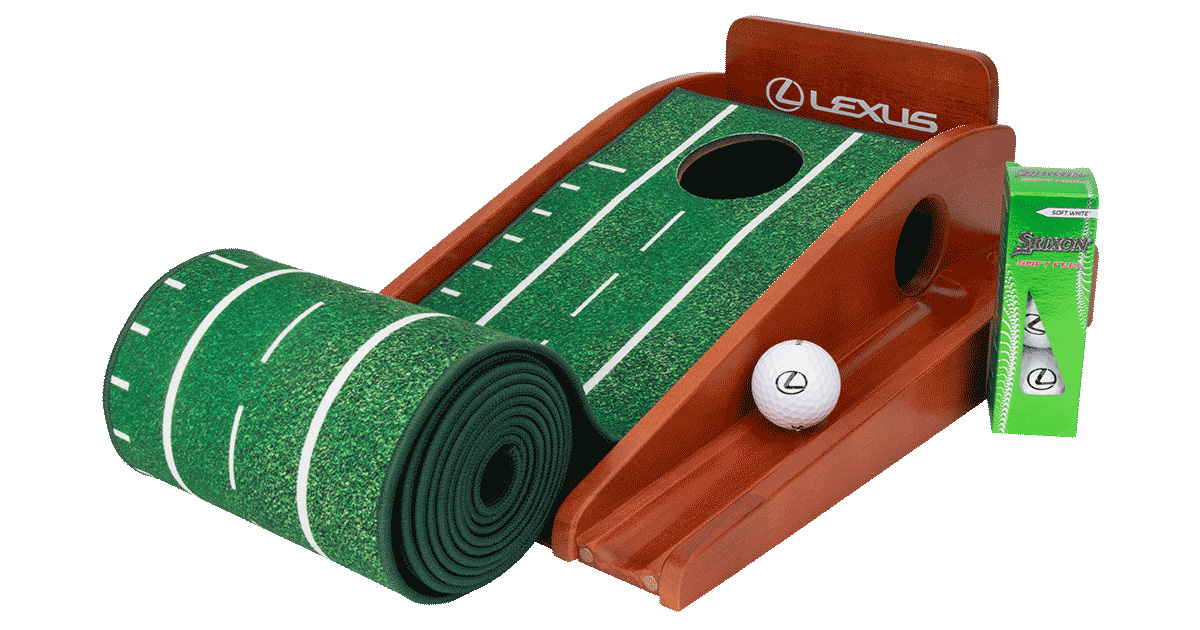
Practice makes perfect with the Lexus Green Pro Set ($257), a putting mat with “train-track markings” to help improve any golfer’s alignment. Lexus logo on the wood frame with automatic ball return.
Lamborghini Wireless Headphones
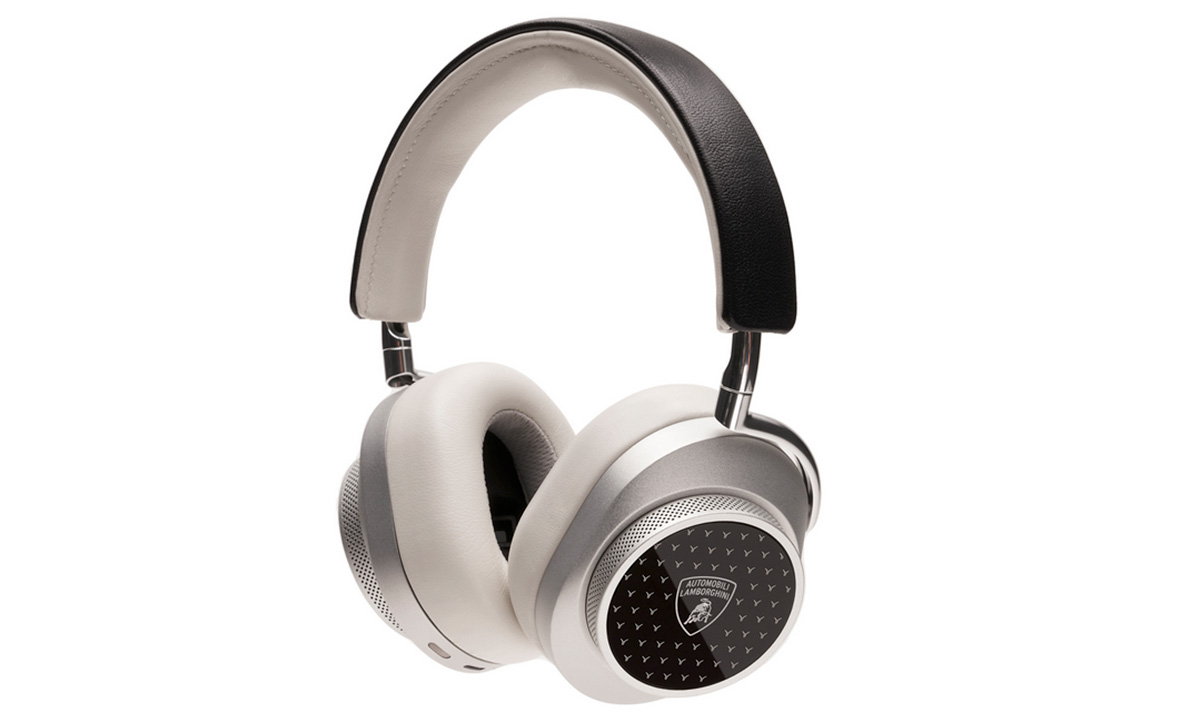
Turn on, tune in, drop out—well, at least at the end of a hectic day—with these Lamborghini Wireless MW75 Headphones by Master & Dynamic ($901). Batteries last up to 32 hours or up to 28 hours in active noise-canceling mode.
BMW Quatro Slim Travel Tumbler

The BMW Quatro Slim Travel Tumbler ($23) lives up to its name: sleek, smooth and scratch-resistant. Comes with leak-proof lid and non-spill design.
Ford Vintage Mustang Ceramic Mug
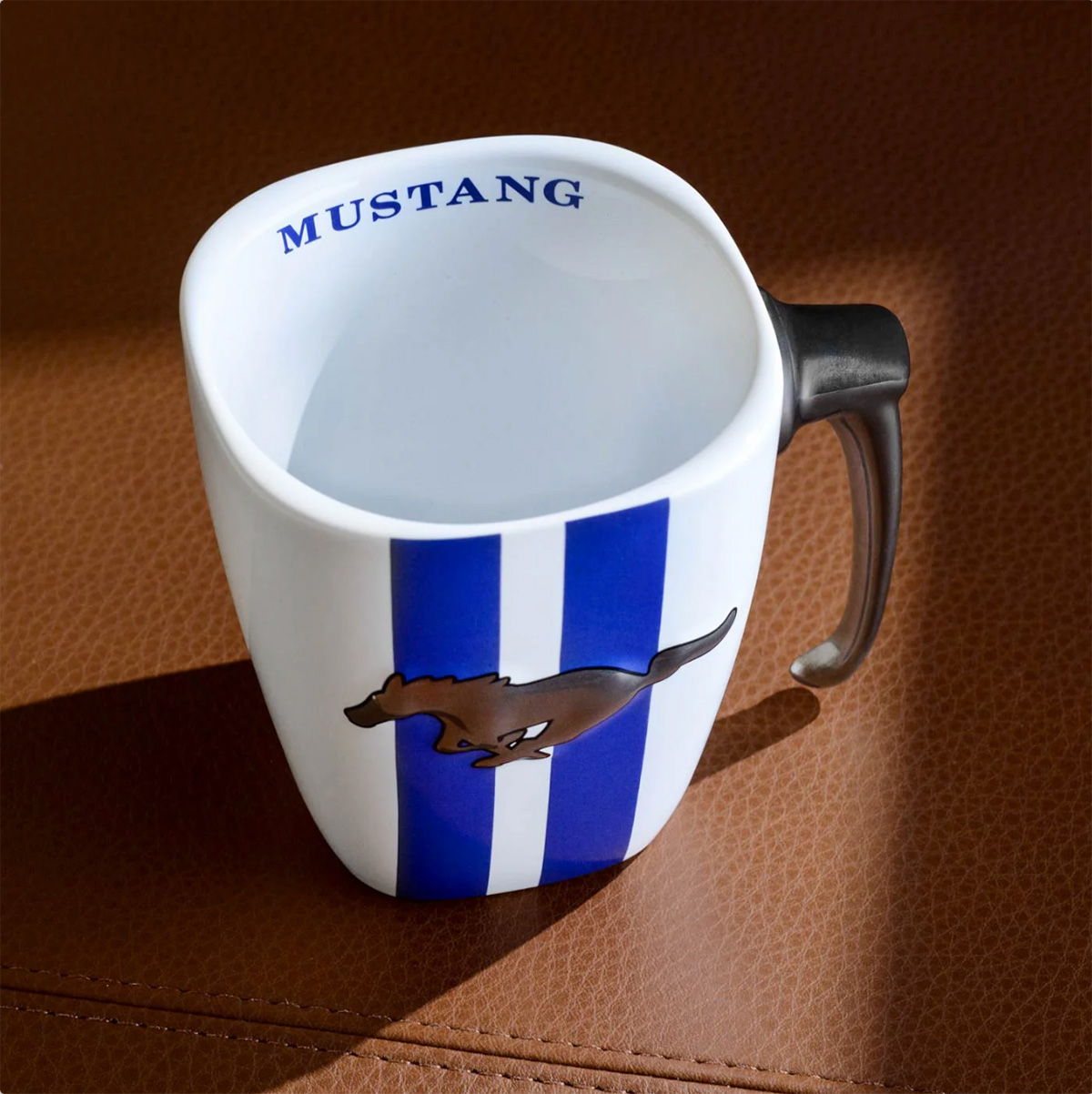
Giddy-up each morning with the Ford Vintage Mustang Ceramic Mug ($29). With cool blue stripes, the 14-ounce mug features a silver handle and iconic pony emblem.
My First Lamborghini by Clementoni
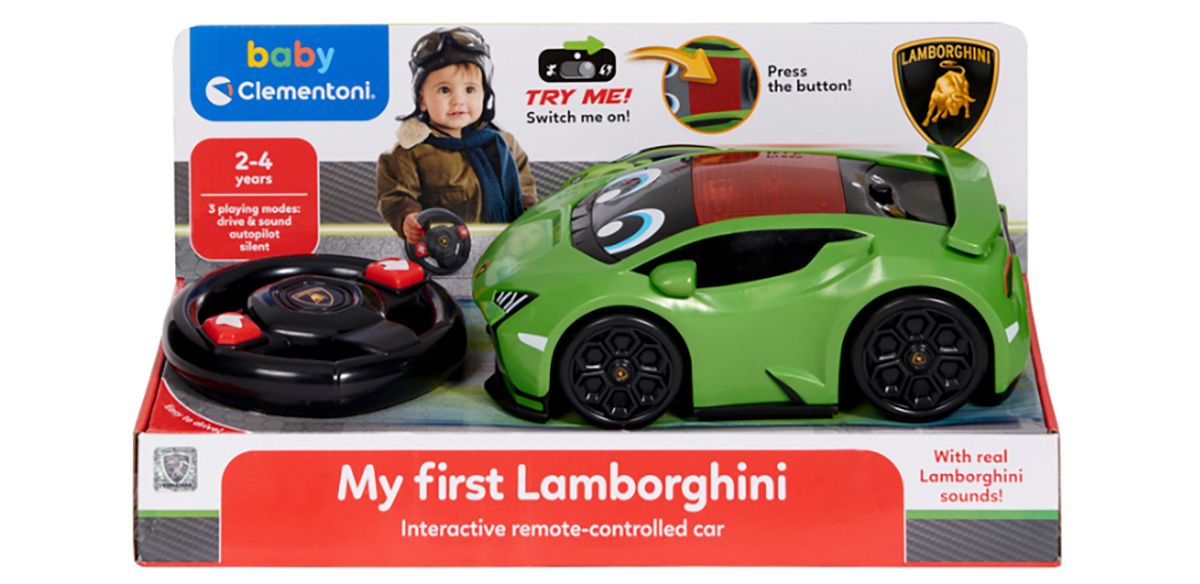
Proving it’s never too early to drive an exotic car, My First Lamborghini by Clementoni ($62) is for children ages two- to four-years old. Kids can activate the remote-control car by pressing the button on the roof or by using the remote. This Lambo certainly is less expensive than an entry-level Huracan, which starts at $250,000.
Rolls-Royce Cameo
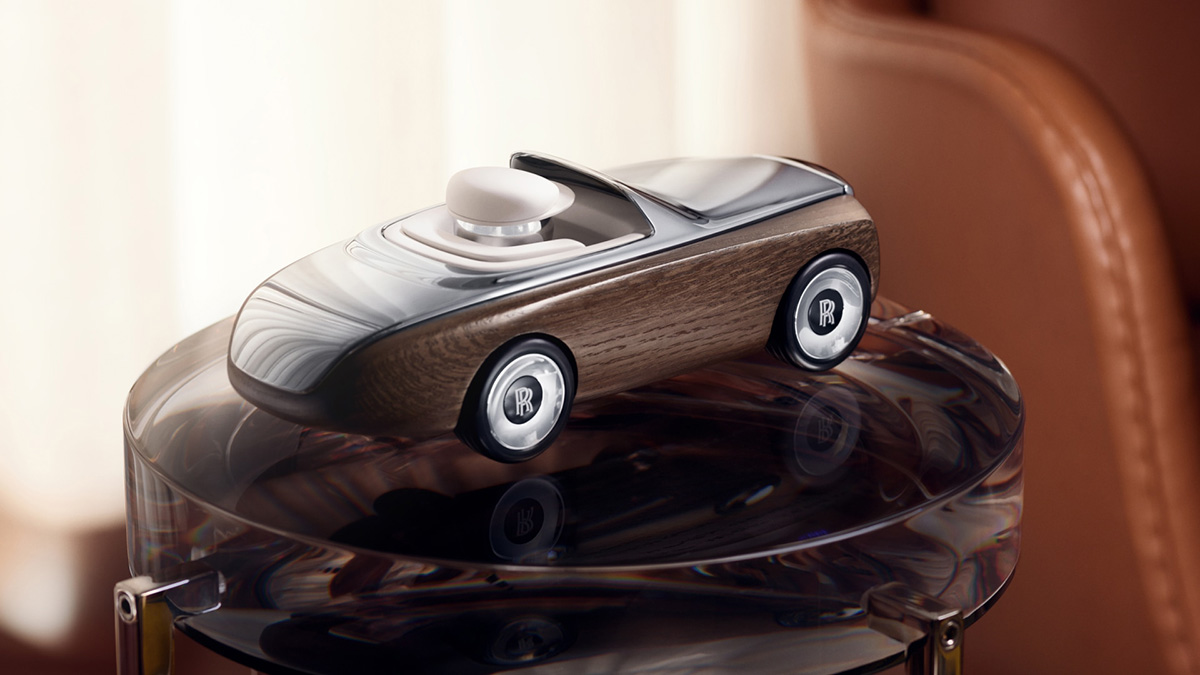
For adults looking for their own pint-sized luxury ride, there’s the Rolls-Royce Cameo ($5,500). Touted as a piece of art rather than a toy, this miniature collectible is made from the same solid oak and polished aluminum used in a real Rolls. As with those cars, this one even has self-leveling wheel-center caps (which operate independently of the hubcaps so that the RR logo is always in the upright position).
Maserati Notebook
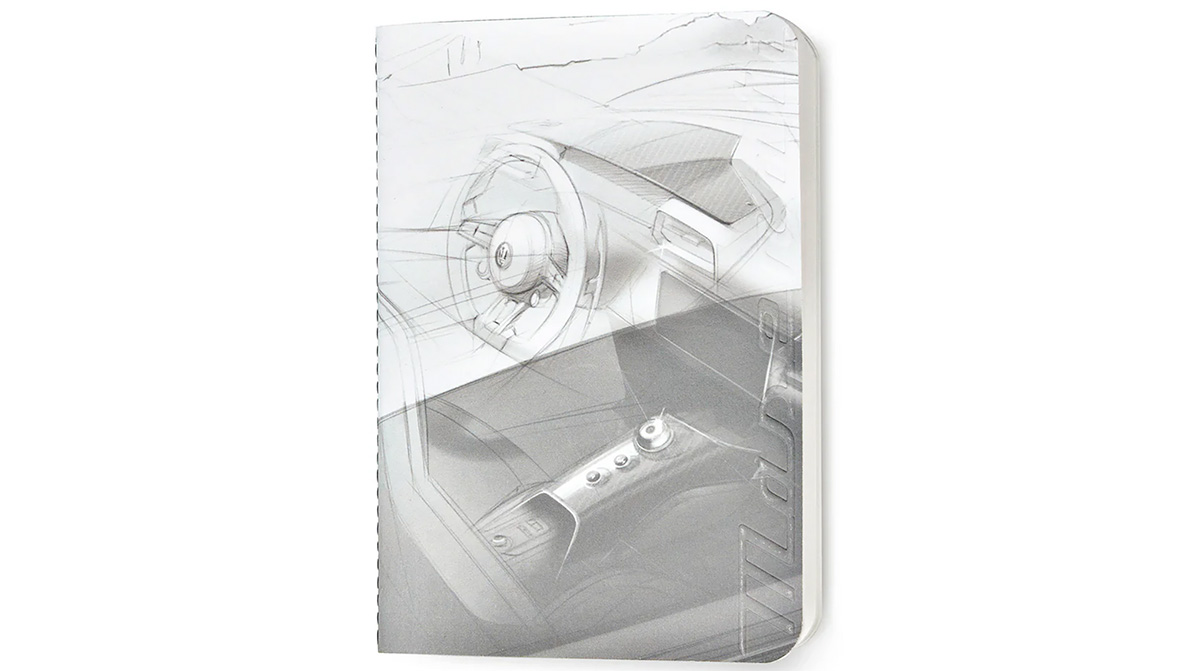
For those of us who still love the art of writing, the Maserati MC20 Sketch Note ($11) is an elegant notebook with 48 sheets of high-quality paper. The front and back covers feature stylish sketches of the interior of a Maserati MC20 supercar and the Maserati logo. Comes with saddle-stitched binding using black thread.
Dodge Demon Dog Collar
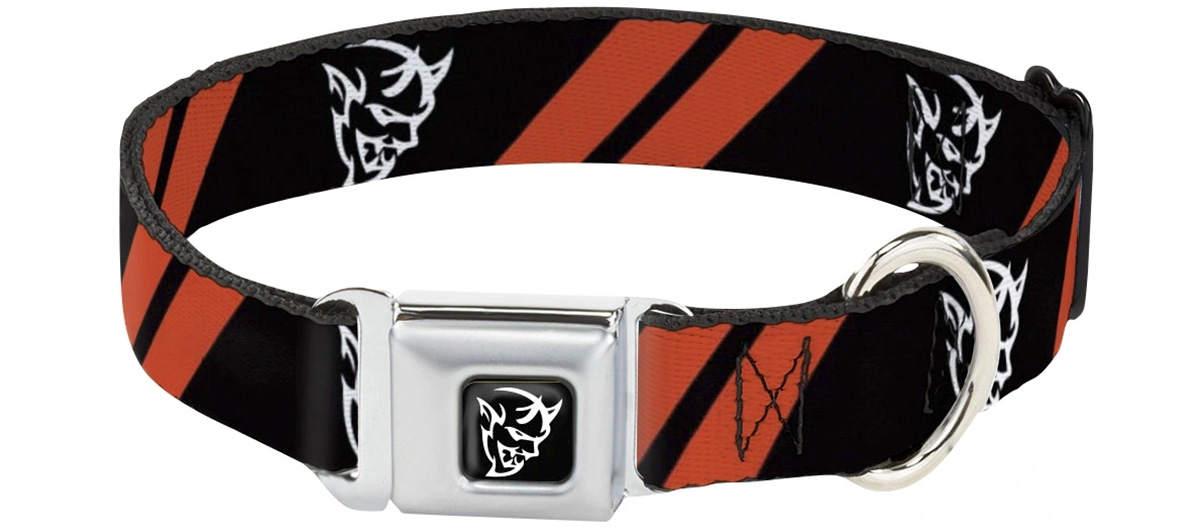
If your pooch is more Fluffy-kins and less the guard dog you sometimes need it to be, then there’s the Dodge Demon Seatbelt Buckle Dog Collar ($30). Made of steel and high-density polyester with a tiny seatbelt-buckle clasp, the collar is emblazoned with devilish Dodge Demon logos.
Real Estate
In real estate, it’s déjà vu all over again
1970s and ‘80s volatility led to creative financing options
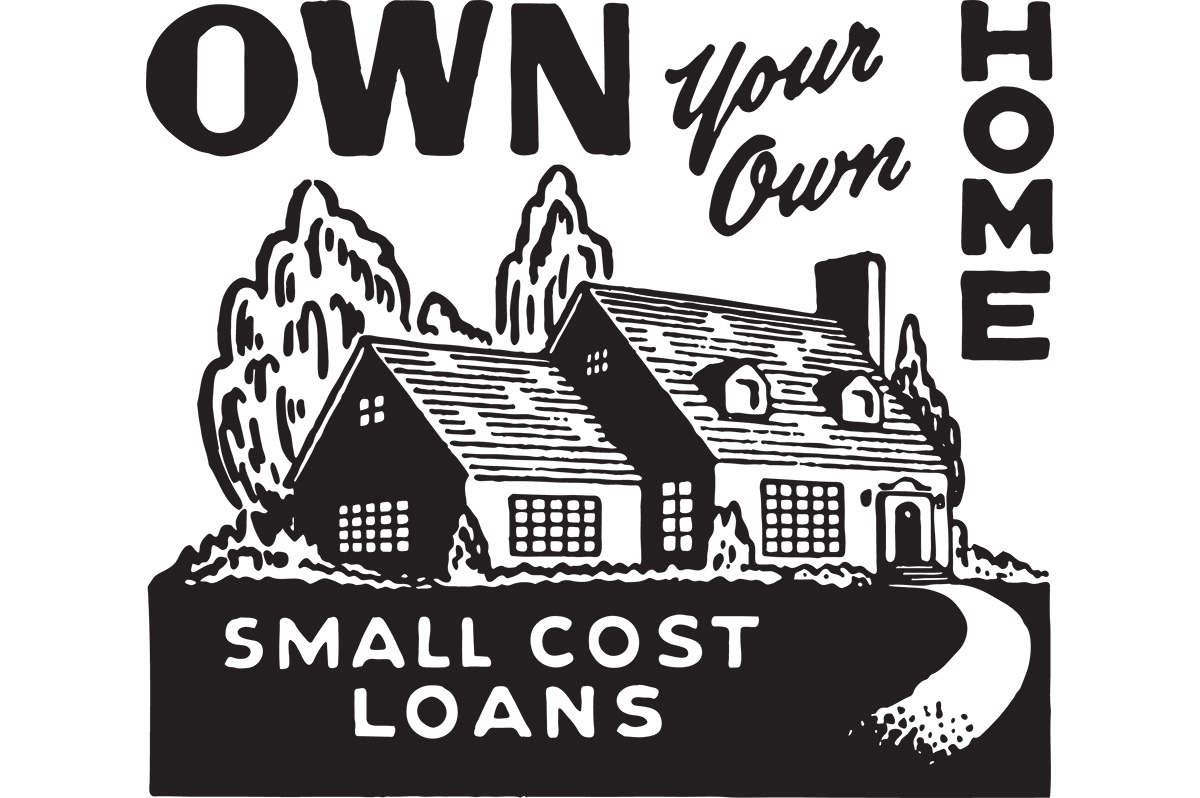
In the 1970s and 1980s, mortgage interest rates climbed into the double digits and peaked above 18%. With rates like that, you needed more than a steady job and a down payment to buy a home — you needed creative financing ideas.
Today’s market challenges may look different, but the response has been surprisingly familiar: unusual financing methods are making a comeback, along with some new ones that didn’t exist decades ago. Here is a brief overview of the most popular tools from that era.
Assumable Mortgages were available with FHA, VA, and USDA loans and, until 1982, even Conventional mortgages. They allowed a buyer to take over the seller’s existing mortgage, including its interest rate, rather than getting a brand-new loan, while compensating the seller for the difference between the assumed loan balance and the contract price.
Often, a seller played a substantial role in a purchase. With Seller Financing (Owner Carry) the seller became the bank, letting the buyer make payments directly to them instead of to a traditional lender.
One variation on Seller Financing was the Land Contract. The seller was still the lender, but the buyer made loan payments to the seller, who then paid his own mortgage and pocketed the difference. The buyer would receive equitable title (the right to use and occupy the property), while the seller kept the title or deed until the contract was paid off or the property sold.
With Wraparound Mortgages, the seller created a new, larger loan for the buyer that “wrapped” around the existing mortgage at an agreed-upon rate. The buyer would then pay the seller, who would continue making mortgage payments on the existing balance, collecting payments and pocketing the spread. Whether title conveyed to the buyer or remained with the seller was negotiated between the parties.
Unlike an assumption, when buying a home Subject To an existing mortgage, the buyer took title to the property and agreed to pay the seller’s mortgage directly to the lender plus any equity to the seller; the mortgage stayed in the seller’s name. Now, most mortgages have a Due on Sale clause that prohibits this kind of transaction without the expressed consent of the lender.
Rent-to-Own was also a popular way to get into a home. While a potential buyer rented a property, the seller would offer an option to purchase for a set amount to be exercised at a later date (lease option) or allow a portion of the rent collected to be considered as a downpayment once accrued (lease purchase).
Graduated Payment Mortgage (GPM) loans were authorized by the banking industry in the mid-1970s and Adjustable Rate Mortgages (ARM) surfaced in the early 1980s. Both featured low initial payments that gradually increased over time.
With the GPM, although lower than market to start, the interest rate was fixed and payment increases were scheduled. A buyer could rely on the payment amount and save accordingly.
ARMs, on the other hand, had interest rates that could change based on the market index, with less predictability and a higher risk of rate shocks, as we saw during the Great Recession from 2007-2009.
While mortgage rates today aren’t anywhere near the extremes of the 1980s, buyers still face a tough environment: higher prices, limited inventory, and stricter lending standards. That combination has pushed people to explore tried and true alternatives and add new ones.
Assumable mortgages and ARMs are on the table again and seller financing is still worth exploring. Just last week, I overheard a colleague asking about a land contract.
Lenders are beginning to use Alternative Credit Evaluation indicators, like rental payment history or bank cash-flow analysis, to assess borrower strength when making mortgage loan decisions.
There are Shared Equity Programs, where companies or nonprofits contribute part of a down payment in exchange for a share of the home’s future appreciation. With Crowdfunding Platforms, investors pool money online to finance real estate purchases or developments.
Another unconventional idea being debated today is the 50-year mortgage, designed to help buyers manage high home prices. Such a mortgage would have a 50-year repayment term, rather than the standard 30 years, lowering monthly payments by stretching them over a longer period.
Supporters argue that a 50-year mortgage could make monthly payments significantly more affordable for first-time buyers who feel priced out of the market. Critics, however, warn that while the monthly payment may be lower, the lifetime interest cost would be much higher.
What ties the past and present together is necessity. As long as affordability remains strained, creative financing – old and new – will continue to shape the way real estate gets bought and sold. As with everything real estate, my question will always be, “What’s next?”
Valerie M. Blake is a licensed Associate Broker in D.C., Maryland, and Virginia with RLAH @properties. Call or text her at 202-246-8602, email her at [email protected] or follow her on Facebook at TheRealst8ofAffairs.

